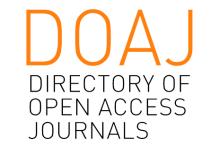Resource information
The formation of ‘Urban Networks’ has become a wide-spread phenomenon around the world. In the study of metropolitan regions, there are competing or diverging views about management and control of environmental and land-use factors as well as about scales and arrangements of settlements. Especially in China, these matters alongside of regulatory aspects, infrastructure applications, and resource allocations, are important because of population concentrations and the overlapping of urban areas with other land resources. On the other hand, the increasing sophistication of models operating on iterative computational power and widely-available spatial information and analytical techniques make it possible to simulate and investigate the spatial distribution of urban territories at a regional scale. This research applies a scenario-based Cellular Automata model to a case study of the Changjiang Delta Region, which produces useful and predictive scenario-based projections within the region, using quantitative methods and baseline conditions that address issues of regional urban development. The contribution of the research includes the improvement of computer simulation of urban growth, the application of urban form and other indices to evaluate complex urban conditions, and a heightened understanding of the performance of an urban network in the Changjiang Delta Region composed of big, medium, and small-sized cities and towns.



